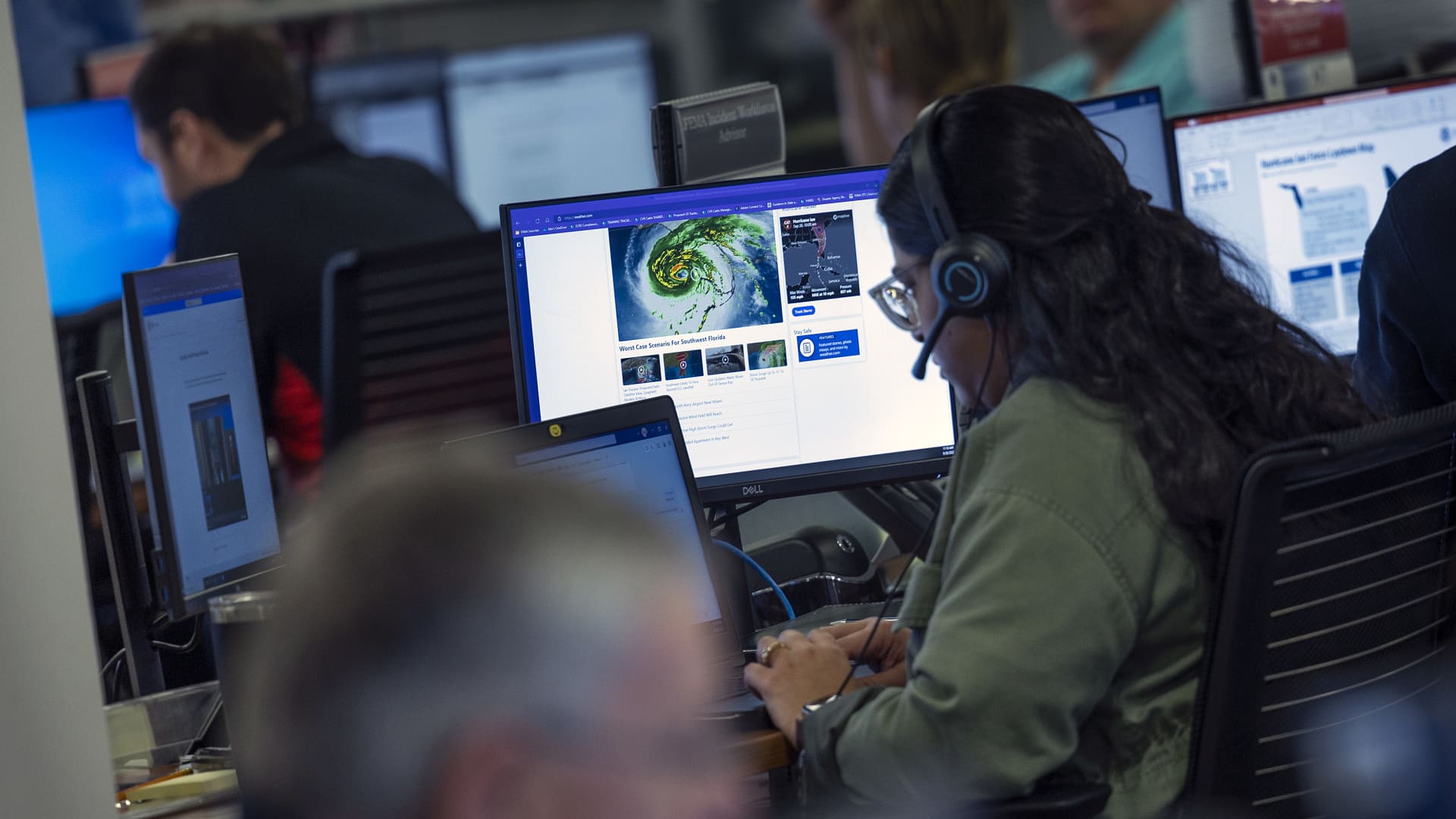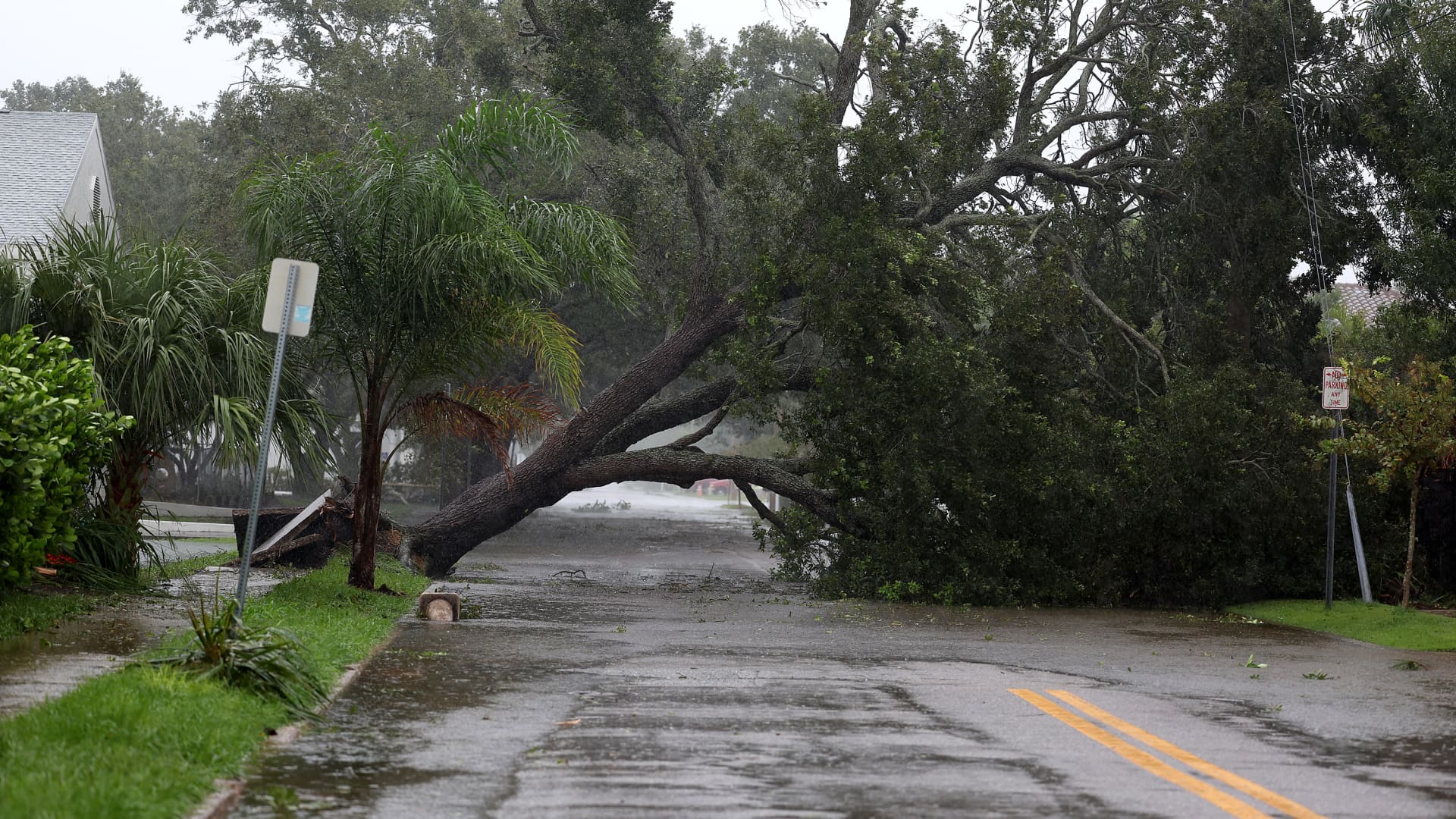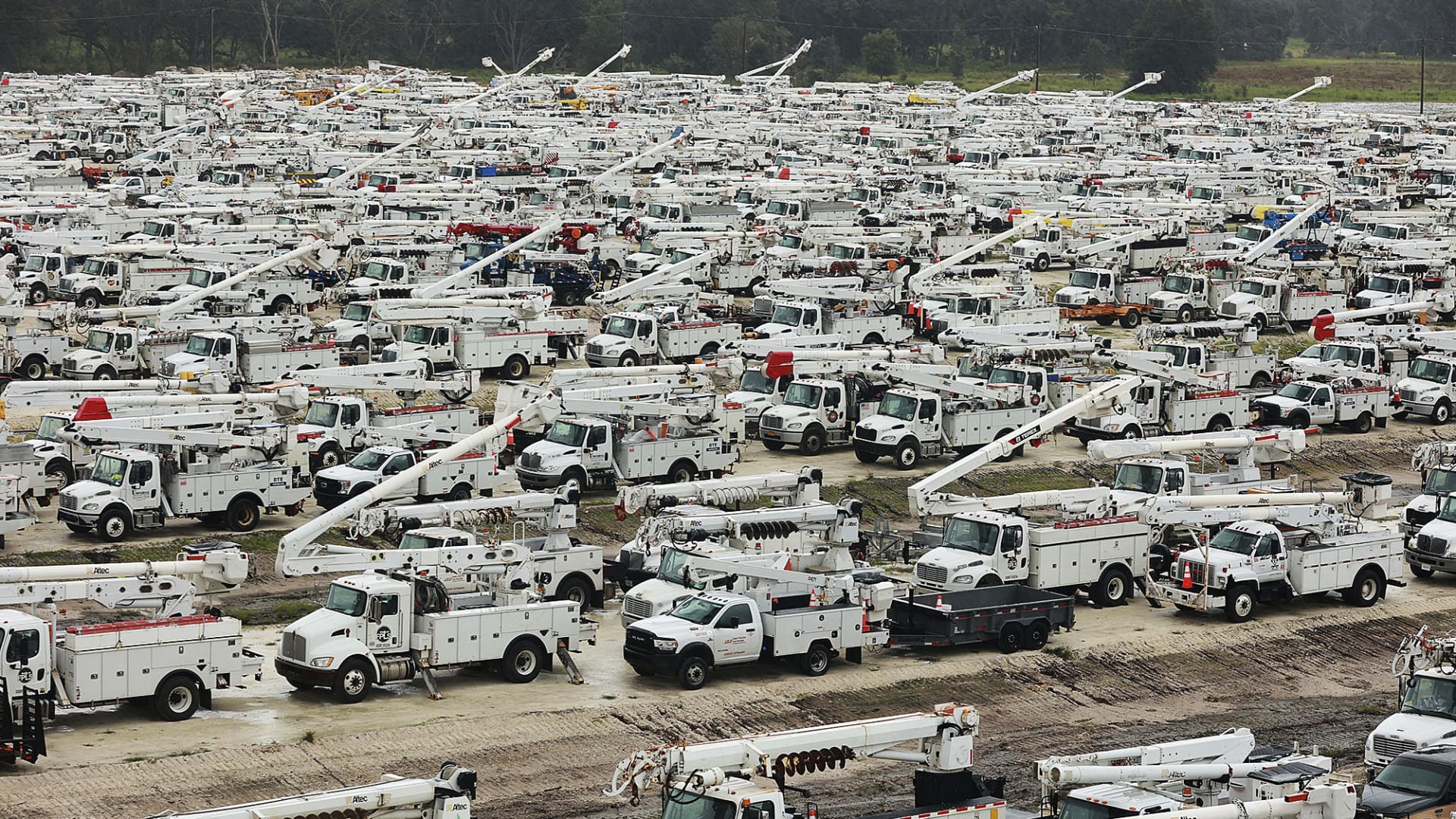
- Hurricane Ian was downgraded to a tropical storm early Thursday but still expected to produce strong winds, heavy rains, and storm surge across, according to the National Weather Service.
- The storm made landfall over the west coast of Florida as a category 4 storm on Wednesday afternoon, according to the National Hurricane Center.
- It knocked out power to more than 2 million people in Florida, NBC News said.
- Track the storm's progress here.
Hurricane Ian was downgraded to a tropical storm early Thursday but still expected to produce strong winds, heavy rains, and storm surge, according to the National Weather Service.
Ian had maximum sustained winds of near 65 mph with higher gusts early Thursday as it moved slowly through central Florida on its way to the western Atlantic, according to the National Hurricane Center.
Get Tri-state area news delivered to your inbox.> Sign up for NBC New York's News Headlines newsletter.
By 5 a.m., Ian was around 55 miles southwest of Cape Canaveral and moving northeast at 9 mph, the hurricane center said.
The storm made landfall over the west coast of Florida as a category 4 storm on Wednesday afternoon, according to the National Hurricane Center. It knocked out power to more than 2 million people in Florida, NBC News said.
Around 2.4 million customers in Florida were without power early Thursday after Ian struck the state's western coast, causing a path of destruction as it moved toward the Atlantic Ocean, NBC News reported.
"Widespread, life-threatening catastrophic flash and urban flooding, with major to record flooding along rivers, is expected to continue across central Florida," the National Hurricane Center said in an update.

The storm initially hit near Cayo Costa, Florida with maximum sustained winds at 150 mph, the center said on Twitter. It hit Punta Gorda, near Pirate Harbor, just a few hours later.
Money Report
Hurricane Ian greatly intensified as it neared land, reaching winds of 155 mph and nearing the most dangerous Category 5 classification Wednesday morning. Hurricane force winds were 35 miles out from the center and tropical storm force winds were 150 miles from the center, according to the National Weather Service.
"This is going to be a nasty, nasty day, two days" Gov. Ron DeSantis said early Wednesday in a press conference. Officials in Florida and nationally are closely tracking the storm's movements.

More than 2.5 million people were under mandatory evacuation orders in Florida, but legally, no residents can be forced to leave their homes. DeSantis said the highest-risk areas in the state range from Collier County up to Sarasota County, and it is no longer safe for residents in those counties to evacuate.
"Do what you need to do to stay safe. If you are where that storm is approaching, you're already in hazardous conditions. It's going to get a lot worse very quickly. So please hunker down," he said.
Rainfall near the storm's landfall site could top more than 18 inches, and storm surges could push as much as 18 feet of water over nearly 100 miles of coastline, according to the National Hurricane Center. The National Weather Service has also issued the highest-possible wind warning for several regions in Florida in anticipation of extreme wind damage from the storm. But meteorologists were most concerned about the flooding.
"Water. We have to talk about the water," warned National Weather Service Director Ken Graham. "90% of fatalities in these tropical systems comes from the water. It's the storm surge, it's the rain."
Much of Florida's west coast is already experiencing significant storm surges, as whipping winds and feet of water have blanketed the streets of cities like Fort Myers. The city wrote on Twitter that it is experiencing gusts of wind up to 77 mph and asked residents to "PLEASE stay indoors." It warned that conditions will continue to escalate throughout the day.
For residents who can still evacuate, American Red Cross CEO Gail McGovern encouraged them to follow the evacuation instructions of their elected officials and bring essential medication, documents and other items like glasses with them.
"Check on your neighbors and please don't wait out the storm if you're being told to evacuate — it's dangerous," she said in a Wednesday press briefing.
Gov. DeSantis said the state has 42,000 linemen, 7,000 National Guard troops from Florida and elsewhere and urban search and rescue teams ready to help when the storm is over.

The hurricane left all of Cuba without power after it pummeled the island on Tuesday, according to NBC News. At least two storm-related deaths were reported in Cuba as of Wednesday.
As the storm continues to batter the Florida coast, the National Hurricane Center issued new watches and warnings for parts of North Carolina and South Carolina.
Hurricane Ian is even visible from the International Space Station, with onboard cameras capturing footage of the storm as it looms over Florida.

Even once the storm is over, DeSantis said it may not be completely safe to go outside. He encouraged residents to be careful of fallen powerlines, standing water and fallen trees.
President Joe Biden told Florida residents Wednesday he would support them through the storm "every step of the way."
"We'll be there to help you clean up and rebuild, to help Florida get moving again," he said.
Candy Powell, an east Orlando resident, has lived in Florida since 2016 and watched the state face hurricanes like Irma, Dorian and Matthew. She said she feels like there was less time to prepare for Hurricane Ian, but she is trying to stay calm for the sake of her neighbors.
"I think a lot of people who just moved into Florida were really, really stressed," she told CNBC. "I'm kind of trying to be like the calming factor. Even going to the store yesterday, I actually just kind of had to almost get just regular groceries. The shelves were empty. There was hardly any canned stuff left."
Powell can tell the storm is picking up, and she said she is already noticing rushing winds and heavy rain.
Flannery Dziedzic, who lives in Naples, said she has also noticed the winds pick up in her area. She said her power has been going in and out, and a piece of debris hit her window while she was on the phone with CNBC.
The storm seems bigger and more intense than hurricanes she's dealt with in the past, she said, but since she is six miles from the coast, she feels "pretty safe."
"I feel like Floridians are really resilient," she said.
NBC News contributed to this report
This story is developing, please check back for updates.






